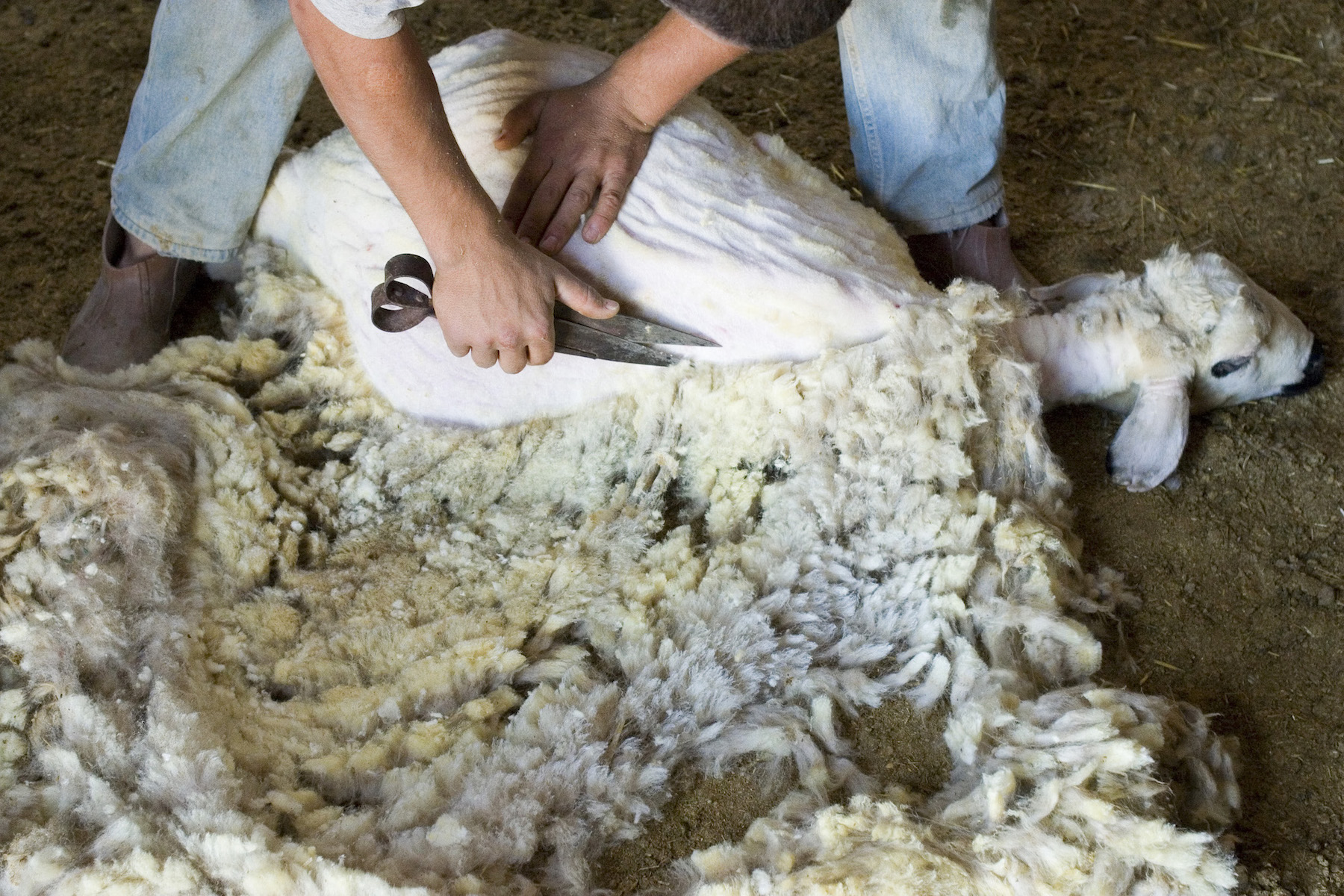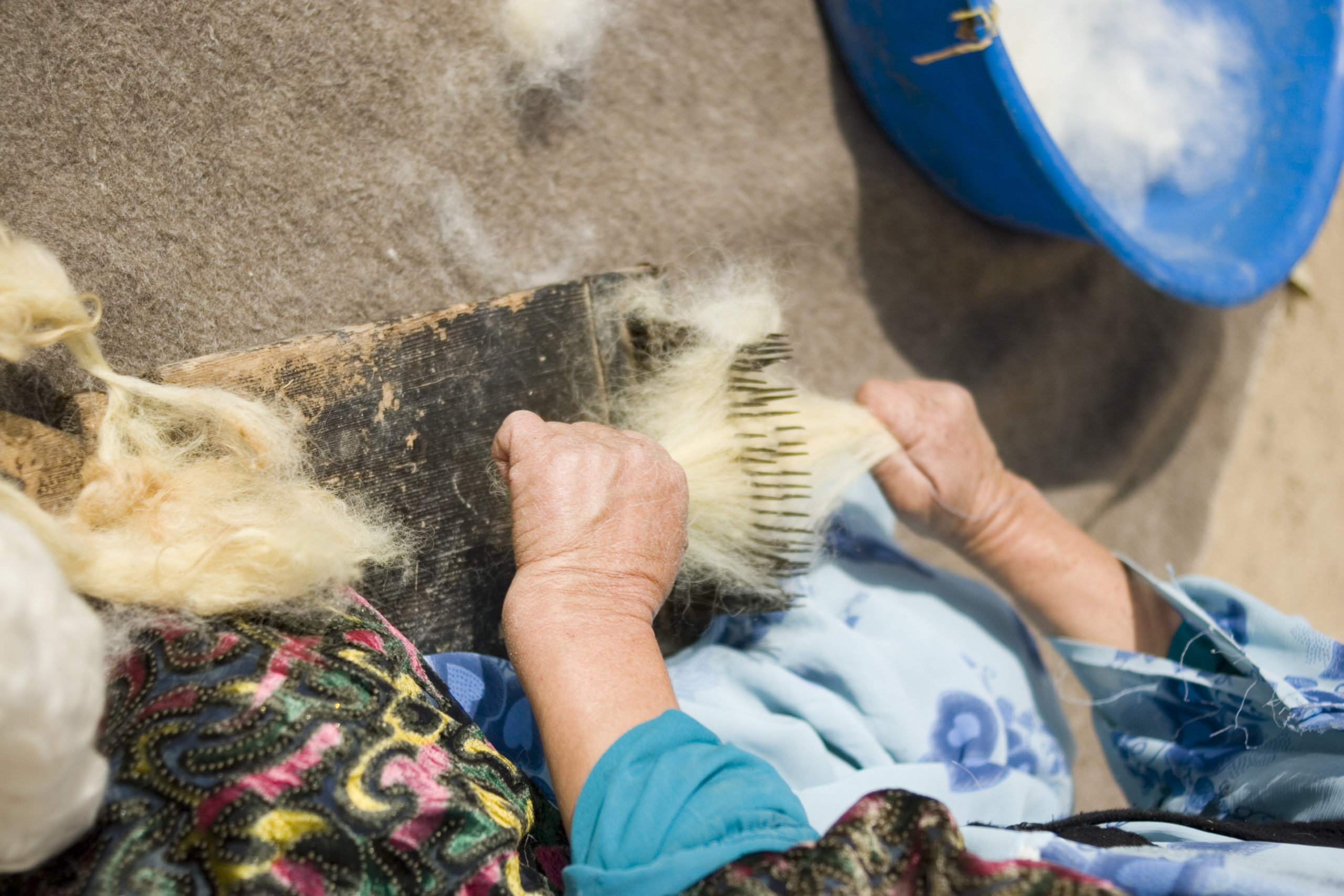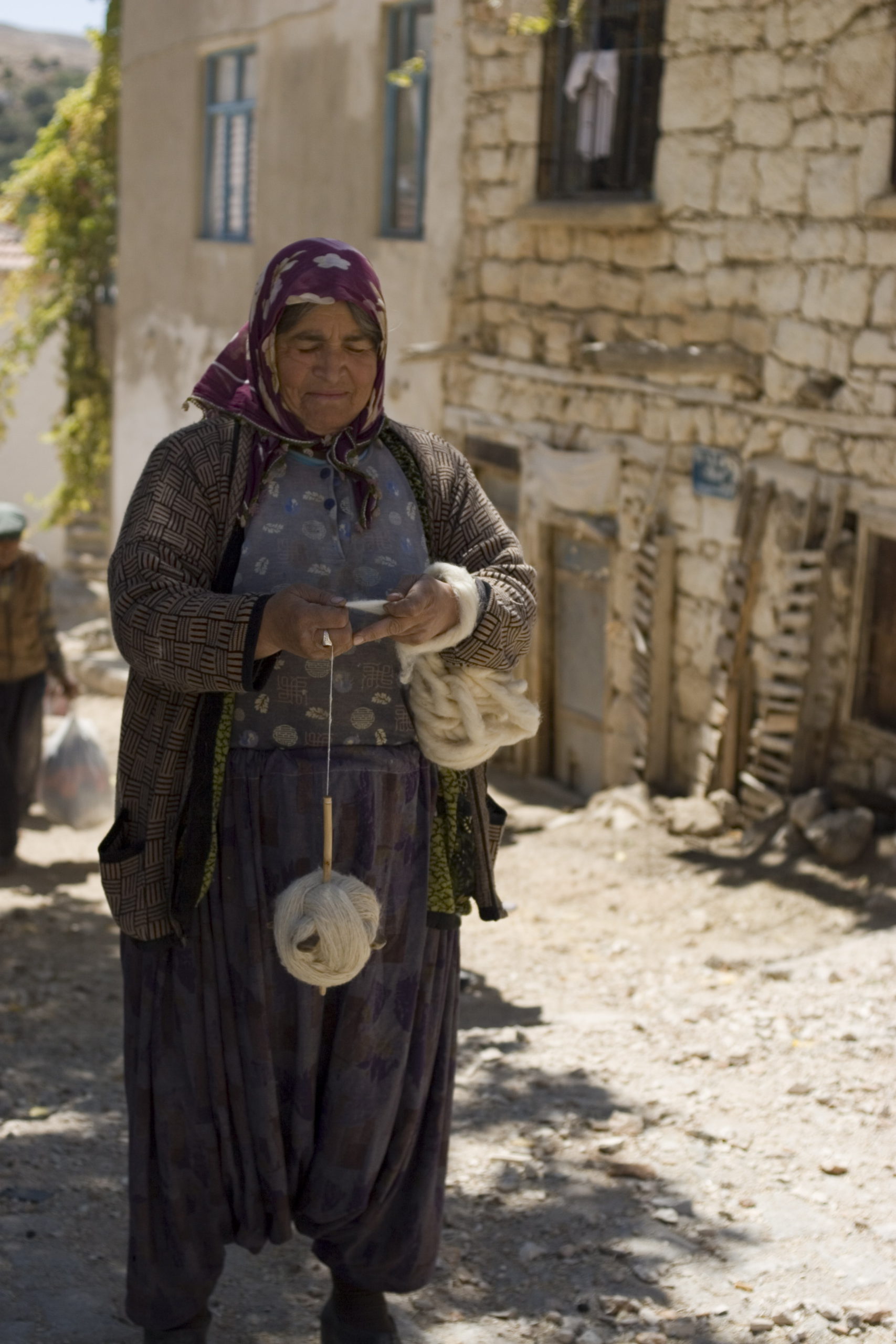As in every part of the world, we are constantly investing and cooperating with state and non-governmental organizations to keep the old art of carpet weaving alive, especially in Anatolia and Mesopotamia.
The materials used in our carpets that decorate your home or valuable places come from the natural beauties that Mother Nature gives us. We respect the environment, protect and develop the old, and produce these unique works in 100% natural ways. We are honored with this. We use Akkaraman sheep wool in our carpets. The voyage of our woolen threads: Shearing ➔ Washing ➔ Brushing & Carding ➔ Spinning ➔ Yarn
 Photo: Akkaraman Sheeps from the Ararat Mountain
Photo: Akkaraman Sheeps from the Ararat MountainWe are working hard to continue the sheep farming activities in the region and to turn their precious wool into oriental carpets. At the same time, we continue to develop our business continuously for the survival of the weaving craft.
All wool has a use. Different breeds produce different wool. The diversity of breeds is a strength, and maintaining this diversity contributes to the protection of various genetic traits that can be useful in achieving different characteristics of wool. Wool is a protein fiber with scales and crimps that make it easier to spin into yarn because the fibers interlock with each other rather than slide loosely against each other (as in the case of cotton, which is made of cellulose). Wool fibers can absorb almost one-third of their weight in water, making wool yarns excellent for wicking moisture. Wool fibers are also elastic, meaning wool yarns retain their shape over the lifespan.
The characteristics of wool that will determine what it can be used for are: Diameter (microns), Staple length, Uniformity of fleece, Elasticity, Strength/Durability, Luster, Felt-ability.
Some breeds produce wool fibers that are springy and short, relatively soft, and do not feel easily. They are fine and wearable close to the skin, such as in New Zealand and Australia, and are suitable for fabrics and garments but not carpets. Most carpet producers use those types of short-fiber wool. As Ararat, we strictly use traditional Akkaraman sheep wool, which has a long staple length; fibers are more robust and have lots of luster, meaning they take up the dye and create brightly colored long-life carpets.
All wool sheep must be shorn at least annually and as frequently as necessary to mitigate animal health, which makes shearing one of the most important processes for Ararat. We work with a competent shearer team using techniques to minimize animal stress and injury. All shearing-related injuries are attended to promptly and according to the flock's health. Our shearing place has a suitable area set up for shearing that is adequate in size, clean, and well-lit to ensure the well-being of both the sheep and the shearer.
All shearing equipment and clothing are cleaned and disinfected between flocks at a minimum and between animals within a flock if there is a known disease transfer risk. When planning to sheare, we must consider the time of year, expected weather, local insect season, and available shelter and take steps to prevent the potential negative outcomes associated with shearing.
We always use %100 crimped wool from live flocks in our carpets. In the market, there are much cheaper wool alternatives like skin wool (fellmonger wool), obtained from the skin of slaughtered or deceased animals, usually by fermentation or chemical treatment, and has low quality and durability. We hesitate to use these fellmonger wools and don't suggest and offer our customers those alternatives.
 Photo: Akkaraman Sheep Shearing Process
Photo: Akkaraman Sheep Shearing Process Photo: Wools are getting ready traditionally to dry by a villager
Photo: Wools are getting ready traditionally to dry by a villagerWorking with raw fleece can be both rewarding and frustrating at the same time. Even under the best pasture practices and shearing conditions, fleece will contain “stuff” that needs to be kept out of the fiber preparation and spinning processes.
The washing process is critical to prepare raw wool for spinning and dyeing. It’s harmful to wool’s properties to wash at more than 90 degrees Celsius. Nowadays, raw wools are washed with high degrees Celsius and heavy chemical detergents, but it has bad effects on wool quality & properties. To avoid harming our raw wools, they are washed long at low temperatures with our special cleaning formulas. With Ararat’s expertise, wools are washed without an annoying smell, keeping wool’s natural structure and beneficial properties, shine, and bright color, able to absorb our natural dyes well.
We care about every step of production, from start to end. We purchase our wools annually after shearing season and assist with washing activities accordingly to deliver the high-end carpets to your valuable places.
Brushing and carding wool is a necessary step in the process of making wool carpets. Carding ensures all the wool fibers are untangled and aligned in one direction, making it easier to spin smoothly. With the help of carding machines, our wool rovings are ready to be distributed to the villages.
When there is special color demand from customers ( the shade of sheep’s naturally white, gray, or brown colors), we use hand separation and brushing to deliver exact natural undyed wool colors.
 Photo: Preparing for the spinning process, a traditional brushing
Photo: Preparing for the spinning process, a traditional brushing Photo: Central Anatolia, woman spinning wool
Photo: Central Anatolia, woman spinning wool We aim to empower women at work; we deliver wool ravings for spinning to older women only in the villages to help them economically and socially. It’s a mutual benefit for Ararat and the community in the region, causing older women to have high skill in spinning from long years of expertise.
Usually, one person can spin 500gr to 600gr wool per day. It's our new project to automatize and improve the hand-spinning process for elders and will help them work more efficiently. With this project, we will make their working conditions easier and be able to increase the capacity of spinning to the max. 2,5kgs per person a day.
Two types of wool yarns are used in our carpets according to thickness. Thinner yarns are used for more knot sizes per cm2 in carpets like Shirvan and Kirman. Normal yarns are used for our other collections. The thickness of hand-spun yarns is always varied and slightly different, unlike a standard machine thread. We try to characterize the yarn and special selection according to the type of carpet. We always keep a big volume for different customer requests and production variations.
